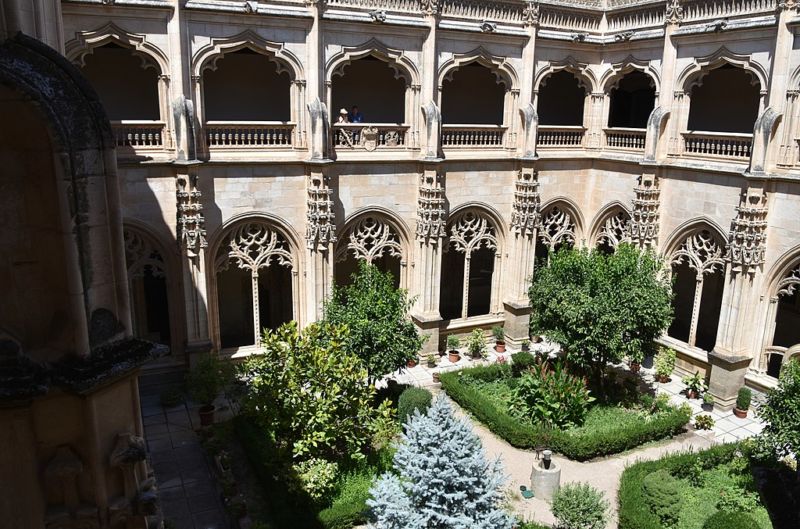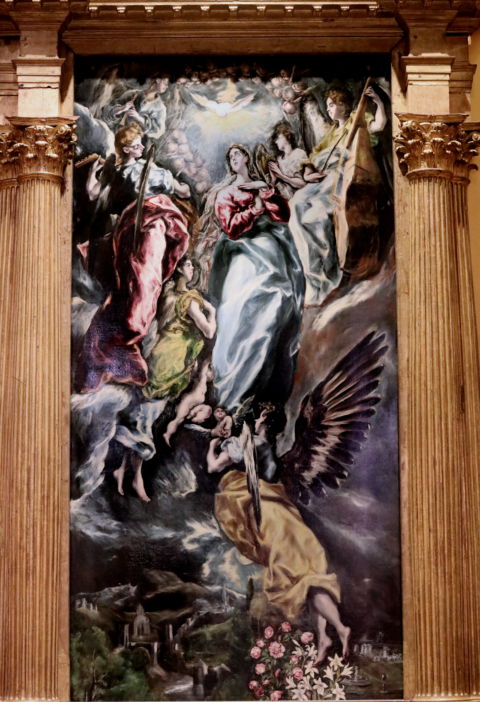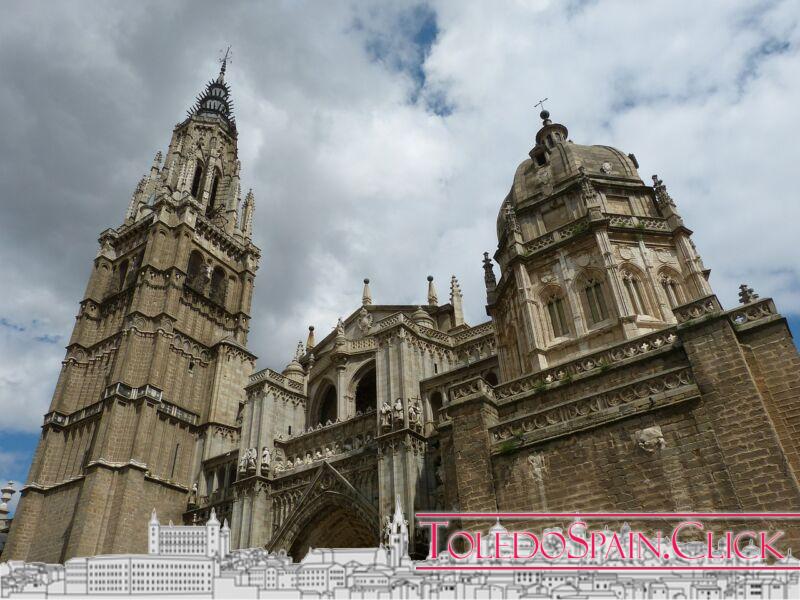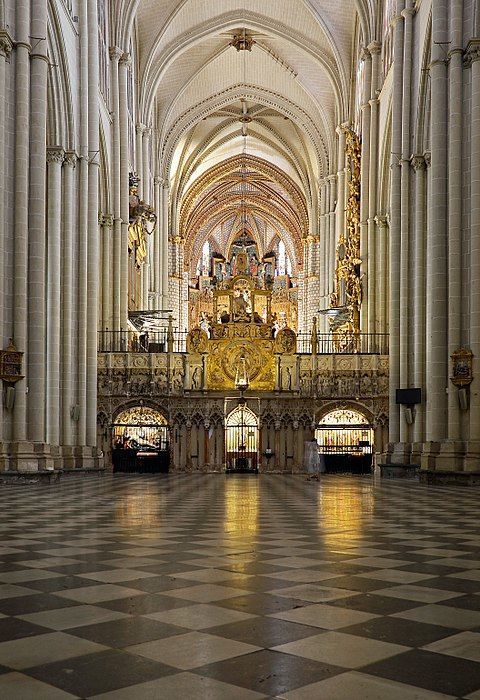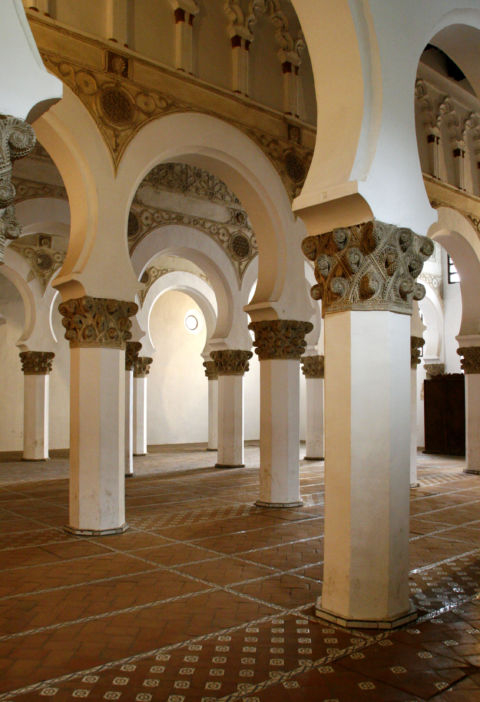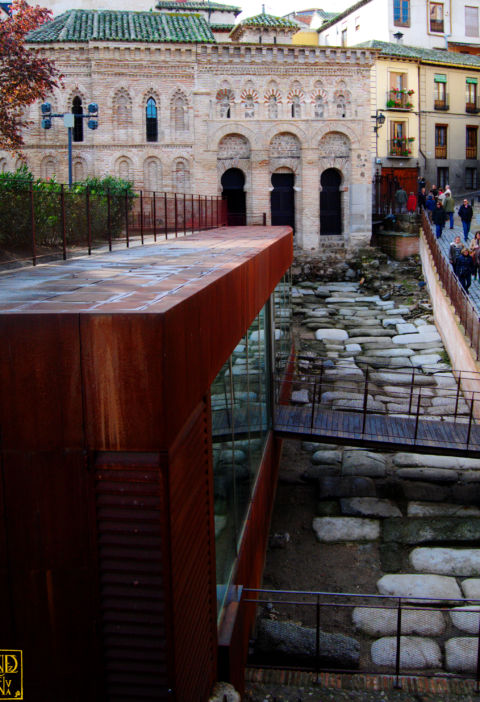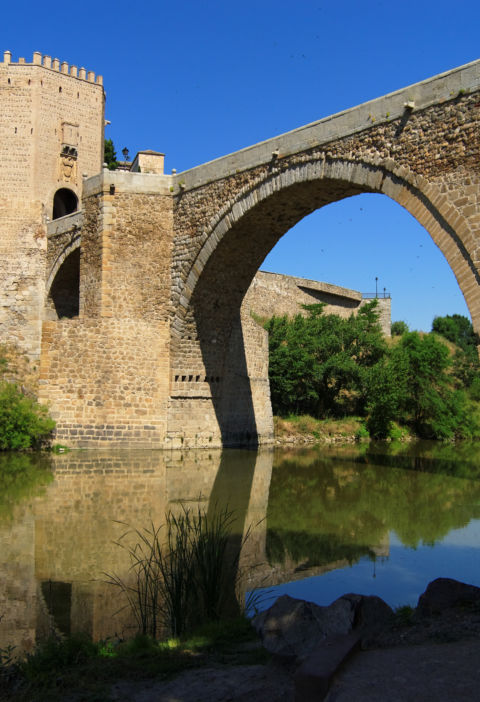Anchored in the heart of the Jewish quarter of Toledo or Judería Mayor, the monastery of San Juan de los Reyes emerges as a slender and elegant ship. The monastery does not want to be quiet but seems to want to sail through the Tagus towards the vegas less abrupt than the place where it is located, nothing less than in the Monte del Alcohol, in the heart of the Heavenly Market where Jews, Arabs or Christians could buy and trade.
It was ordered to be built by the Catholic Monarchs in 1476 in commemoration of the birth of their son Juan and the battle of Toro, in which the troops that supported Isabel and Fernando defeated the armies of the king of Portugal Alfonso V de Avís, who supported Juana “la beltraneja”, with whom he had married in 1475 and whom he considered legitimate heir to the throne of Castile after the death of his father Enrique IV “el impotente”, Isabel’s half-brother.
It was built by the Catholic Monarchs in 1476 in commemoration of the birth of their son John and the battle of Toro
.
Built in flowery Gothic also called toledano or isabelino, what was going to be a great collegiate that served as burial for the Catholic Kings, in the end it was neither one thing nor the other, it was never such collegiate and neither were buried there their Catholic Majesties, since when conquering Granada, (last redoubt of the Arabs in the Iberian Peninsula), Isabel and Fernando decided to bury themselves there, since it seems that in one of their visits to Toledo in full construction of the “Royal Pantheon” and the first project entrusted to Mendo Jahenet, was not of
.
Queen Isabel liked it and her phrase “Qué nonadica me han hecho!” is famous, that is, it seemed small to her “Catholic Majesty”, after which a new project was commissioned and it would be the architect Juan Guas (who was the master builder of the Primate Cathedral), responsible for carrying out the new layout; Enrique Egas, Simon de Colonia and the Antón brothers also worked.
The building represents a great catafalque in which the Gothic pinnacles seem to us like the candlesticks that hold the candles.
Work began in 1477 and both the church and the cloister were completed in the early 16th century. The magnificent staircase that joins the two floors of the cloister was made by Alonso de Covarrubias in the middle of that century. Nicolás de Vergara “el Viejo” designed the large entrance to the church in 1553 but the person in charge of finishing it was Juan Bautista Monegro in the first years of the 17th century.
You may also be interested in: Toledo Time Capsule  View of San Juan de los Reyes from Puente de San Martín in Toledo
View of San Juan de los Reyes from Puente de San Martín in Toledo
The emblem of the Catholic Monarchs is present throughout the building, consisting of an eagle (representing Saint John the Evangelist) holding the coat of arms which distinguishes the different kingdoms that were part of the power of Isabella and Ferdinand. Also present are the yoke and arrows and powerfully draws the visitor’s attention to this important monastery, the shackles or chains of the Christian prisoners freed when conquering the kingdom of Granada and hanging from the outer walls of the temple (read a legend related to these chains).
 Chains in San Juan de los Reyes and Templar currency
Chains in San Juan de los Reyes and Templar currency
In this temple we can read along its walls the Templar motto: ” Non nobis domine, non nobis sed tuo da gloria” -Nothing for us Lord, but your holy name we are to glorify-
If we realize the building represents a large catafalque in which the Gothic pinnacles are craved as the candelabras that hold the candles. The dome stands out in all this set like a real crown that culminates the work, in octagonal form (that means eternity), with arches and stained-glass windows where the light enters to the interior, alternating with other blind holes, this dome is finished off also by pinnacles. The head is made up of six buttresses where we can see two “kings of arms” with the coat of arms of the Catholic Monarchs with their costumes, they are life-size figures.
 Church of San Juan de los Reyes (Toledo)
Church of San Juan de los Reyes (Toledo)
Index of Contents
The church of San Juan de los Reyes
The church is splendid and has only one floor in Elizabethan style, it receives the light from the stained-glass windows and the dome mentioned above. It has chapels on both sides between the buttresses and we can see a true allegorical explosion of the Catholic Monarchs and so we see their coat of arms with their initials, the yoke, arrows and the eagle of San Juan everywhere, as well as an inscription in Latin in the part of the presbytery and transept that alludes to Isabella and Ferdinand.
 Interior of the Church of San Juan de los Reyes
Interior of the Church of San Juan de los Reyes
Another strip, in Spanish, runs through the rest of the church. Initially the entrance to this impressive temple was at the feet below the choir, so the visual effect that was produced when entering was spectacular, but the difficulty that had this access was covered and the entrance to the church was given by the square in front through a large front cover. It has important grilles of various styles and stained-glass windows by various authors, among which we would highlight the one above the portal in which we see the coat of arms of Cardinal Pla and Deniel. The altarpiece that we contemplate today, which is not the original since it disappeared with the French invasion, belongs to the Hospital de Santa Cruz and was made by Francisco Comontes, observing scenes of the life of Jesus, Santa Elena and the coat of arms of Cardinal Mendoza. Above this altarpiece there is a twentieth-century canvas by Romero Carrión.
The cloister of San Juan de los Reyes
 Cloister of San Juan de los Reyes in Toledo
Cloister of San Juan de los Reyes in Toledo
According to some historians, the impressive two-storey square cloister was built or finished after the death of Juan Guas. The lower part, which opens onto the garden, is framed by arches decorated with Gothic traceries, while the upper part is framed by mixtilinear arches typical of late Gothic. One cannot explain in a chapter like this (which must not be excessively long) the beauty of the cloister of San Juan de los Reyes, profusely decorated in its lower part and in the upper part I want to emphasize that the coats of arms of all the kingdoms that possessed Isabel and Fernando are present. There are many authors who have told in great detail the beauty of this monument, so from here I just want to invite you to visit it because it is worth it.
 Cecilio Pizarro. Ruins of San Juan de los Reyes de Toledo. Oil on canvas. 80 x 65,7 cm. 1846. Museo del Romanticismo de Madrid http://europeana.eu/. Pizarro, Cecilio (Place of birth: Toledo, 1825[ca] – Place of death: Madrid, 1886). CER.ES: Red Digital de Colecciones de museos de España – http://ceres.mcu.es/Tanto in the War of Independence as in the Civil War, San Juan de los Reyes suffered a lot of…
Cecilio Pizarro. Ruins of San Juan de los Reyes de Toledo. Oil on canvas. 80 x 65,7 cm. 1846. Museo del Romanticismo de Madrid http://europeana.eu/. Pizarro, Cecilio (Place of birth: Toledo, 1825[ca] – Place of death: Madrid, 1886). CER.ES: Red Digital de Colecciones de museos de España – http://ceres.mcu.es/Tanto in the War of Independence as in the Civil War, San Juan de los Reyes suffered a lot of…

